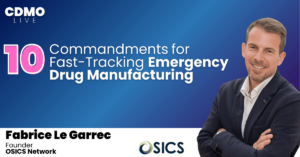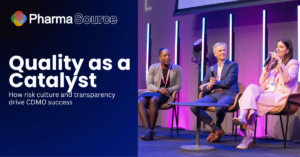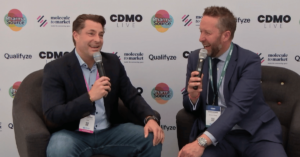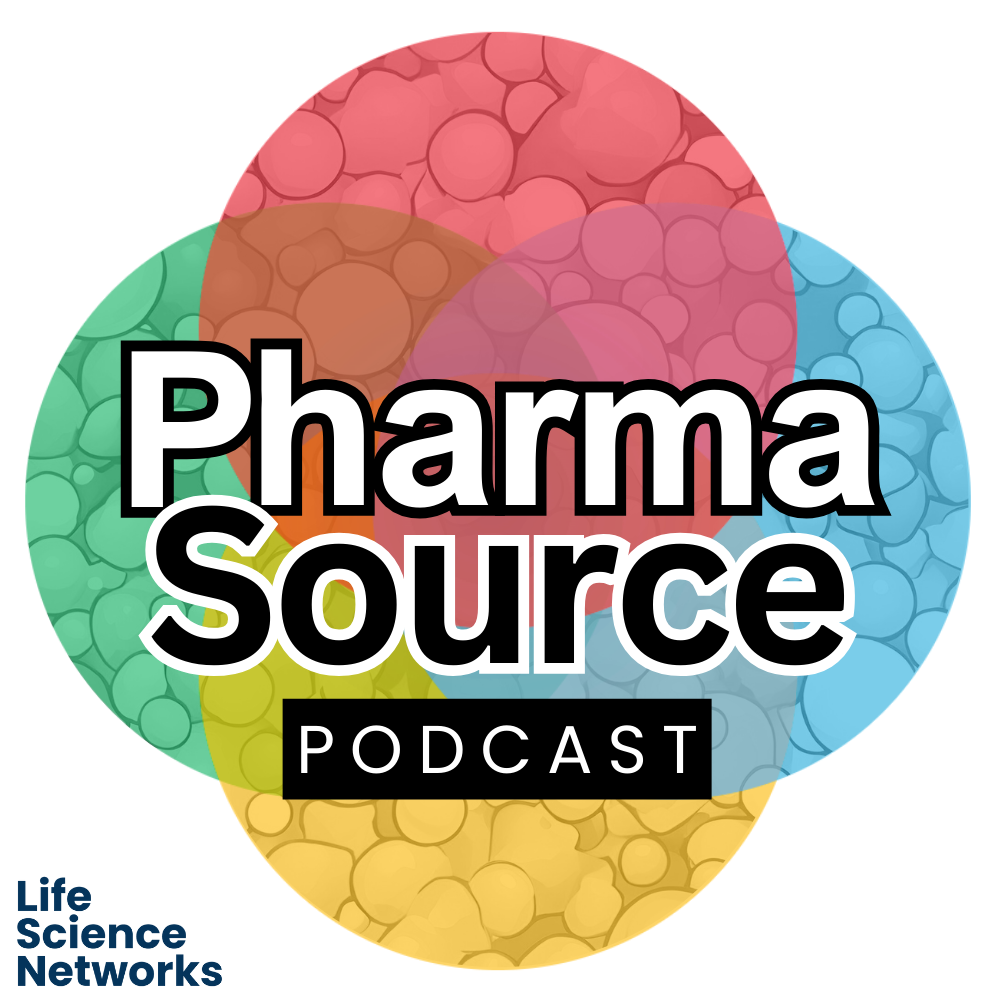“AI doesn’t have to be the first port of call. Many organisations still need to focus on the paper-to-glass journey before they can think about more advanced technologies” – Vishnu Dwadasi
Vishnu Dwadasi, Director of Life Sciences at West Monroe, brings extensive experience across pharmaceutical operations, consulting and business development from both the sponsor and CDMO sides. His career path through companies including Catalent, BioDuro, PII and now West Monroe has given him unique insights into the evolving pharmaceutical outsourcing landscape.
In the latest PharmaSource podcast episode, Vishnu shares his perspective on how private equity investments are reshaping the CDMO landscape, post-merger integration challenges, and the realistic pace of digital transformation within pharmaceutical manufacturing organisations.
The Evolution of CDMOs: From Contract Manufacturers to Development Partners
The relationship between pharmaceutical companies and their manufacturing partners has fundamentally changed over the past decade, according to Vishnu. CDMOs have evolved beyond their traditional role as simple contract manufacturers into true development partners.
“Historically, CDMOs were where a large pharma company might have a product that’s low margin or need a second supplier. What the evolution has been is they’re now more development partners. The D is part of CDMO. The development part is becoming more and more of a focus. It’s not just, ‘Here’s a tech transfer package. Please manufacture it when I send you a PO.’ It’s ‘We have a very special product. We want to develop this with you from phase one, take it to commercial’.”
This shift has been accompanied by increasing specialisation and maturity in the CDMO market, with providers developing deeper expertise in specific technologies like spray drying or hot melt extrusion. Vishnu notes that “CDMOs have done a great job gaining the depth and experience over the last 10-15 years” and are increasingly focused on developing their leadership pipelines and recruitment strategies to support this expanded role.
Post-Merger Integration: Practical Strategies for Success
Private equity interest in CDMOs remains strong in 2025, with Vishnu highlighting that “there’s been a lot of activity so far since Q4 of last year into this year.” The attraction for private equity firms is clear – unlike biotech startups that require lengthy clinical trials before generating revenue, CDMOs are established businesses with existing revenue streams.
“These businesses are revenue generating. It’s different from a biotech company, where we have to rely on technology to go through clinical trials and approval. You already have a business that’s generating revenue, have the right people in place now, it’s investing in process and technology to drive efficiency and throughput, to increase revenue and profitability. And I think that’s where PEs are really looking at this space.”
However, post-merger integration presents significant challenges that can derail even the most promising acquisitions. Vishnu offers several practical strategies for successful integration:
1. Conduct thorough systems evaluation before integration “We need to understand the maturity of each of the businesses, how they’re using systems today. We can’t just say, ‘You’re using SAP as your ERP, and that’s going to work across both businesses.’ We need to understand how they’re using it. Are they using manual processes and ERP?”
2. Run targeted system selections “What’s the right selection for the future state? Part of all of this is change management and training, not just for technology, but how do we harmonize operations or processes or people?”
3. Secure organisation-wide buy-in “A major miss I’ve seen is you need to bring the entire new organisation along for the journey, not just the leadership team. Everybody has to be involved because it is high effort.”
4. Avoid analysis paralysis “You have to strike the right balance of making a decision on harmonising a process or bringing in a technology, versus being paralysed by analysis. You don’t have to continue to check all the boxes, but we have to get 80% there to get moving, because the longer you take, it’s going to be hard to keep engagement for the company.”
5. Map integration to key business processes “Change is tough. It’s important to make sure that everyone’s along for the ride. We change, we manage the change, manage the training. These types of projects require input from leadership all the way down to folks on the shop floor.”
Implementing Digital Transformation: A Staged Approach
While AI is transforming drug discovery and commercial operations, its implementation in pharmaceutical manufacturing requires a realistic, staged approach. Vishnu outlines a practical framework:
Stage 1: Paper-to-Glass Transition “A lot of companies have not invested in technology, so they’re still using manual processes, still paper-based. Their journey is still getting to paper-to-glass. Before they can even think about AI, they have to go through that step.”
Stage 2: Data Strategy Development “For companies that are more mature, you start thinking about where your data is coming from – your ERP, your LIMS, your QMS. Is it centralised? Do you have a data lake that you can start leveraging these AI tools? It all starts from a data strategy.”
Stage 3: Use Case Identification and Implementation “On the CDMO side, it could be supply chain optimization on how you’re procuring material. It could be quality management. There are multiple use cases that really can have a high impact for the industry.”
Vishnu highlights specific AI applications that can deliver immediate value:
- Deviation management: “Can you use Gen AI to draft a deviation for you? Can you use Copilot to help with pulling in data sources to accelerate this type of process?”
- Predictive analytics: “In the next couple of years, we’re going to definitely see more AI on the manufacturing floor, really being able to understand ‘this might be a potential situation on the line that could lead to an out of specification.’ I’m going to know that early on in the process.”
- Revenue acceleration: “These improvements eventually will accelerate revenue recognition for the company.”
Digital Capabilities: Impact on CDMO Valuations
When it comes to CDMO valuations, digital infrastructure can be both an asset and a liability, depending on the implementation.
“The right technology in place will show a buyer that you know how to drive efficiency, transparency to the business, which is important. When you’re a paper-based company, it’s very difficult to pull metrics on what’s happening on the manufacturing floor across the organisation.”
However, Vishnu cautions that overinvestment in technology can also be a red flag for potential acquirers:
“On the other hand, there are companies that have bought a lot of expensive technology, and their ongoing costs are very high, and they may not be even using this technology to the fullest extent, or it may not be even needed for that size of company. If you’re maybe a $50 million revenue CDMO, and you’re spending 10 million on IT, there’s a problem here.”
From the sponsor side, digital capabilities are increasingly becoming a differentiating factor in CDMO selection:
“Larger pharma are looking for CMO partners that are technology forward. They have expectations sometimes to integrate with their systems, have customer portals, not just relying on email. It’s easier if you have workflows that can track and manage your batch record review or CoA review or approval process. Anywhere you can accelerate and have transparency is just very valuable.”
CDMO Selection: Building an Effective Evaluation Framework
For pharmaceutical companies selecting CDMO partners, Vishnu recommends a structured approach that goes beyond personal relationships:
“Number one, you never want to just select a CDMO because your buddy’s the CEO of that organization. I’ve seen that in the past, and it might feel great that, hey, you have something delayed, and you pick up the phone and call the CEO, but that’s not the right way of selecting the right partner.”
Instead, he suggests a more systematic process:
1. Create a cross-functional evaluation team “Before even going into a CDMO selection, have a cross-functional team get together, figure out that framework of what’s important and really evaluate the CDMO properly to make sure it fits your needs.”
2. Define your organisation’s unique priorities “You have to figure out what’s critical for your business, evaluating the QA processes, understanding the customer service, technical expertise and cost. All these different factors are very important.”
3. Weight selection criteria based on project needs “For me, maybe I don’t need customer service as much because I understand the sector well, and I’m going to drive the project myself, but technical expertise is high on my list. I need someone as a partner to help me for the next five years developing my product into getting it through clinical trials.”
4. Assess digital capabilities and technical infrastructure “We’re seeing that in RFPs and supplier selection. They want to understand what ERP you have, LIMS, QMS, those three are so critical for CDMOs.”
5. Evaluate compliance maturity “Companies are going to evaluate you through a selection process, but also they come in and audit, because GMP manufacturing and they want to see your quality management system. They want to see how you’re operating, and if it’s paper-based or more manual, there’s more risk for compliance issues.”
Future Trends: Reshoring, Obesity Drugs, and Creative Partnership Models
Looking ahead, Vishnu identifies several trends that will reshape the CDMO landscape over the coming years:
1. Reshoring of manufacturing operations “The Trump administration is really focused on bringing manufacturing back to the US. We’re going to see a lot more of the large pharma, even all types of sponsor-side clients, moving manufacturing back to the US, moving away from potentially China and India.”
2. Growth in obesity drug manufacturing “There’s a lot of focus on the GLP-1 obesity drugs, and we might be seeing a lot more companies focus in those areas. We might be seeing big pharma companies acquiring more sterile fill-finish sites to support these drugs.”
3. Creative partnership models Vishnu advocates for more innovative financial arrangements between sponsors and CDMOs:
“I would definitely like to see CDMOs co-investing with companies more. It’s just been a relationship of contract, sign, execute, instead of ‘Let’s really understand your product. What’s the potential commercial market for this? Should we co-invest and be a true partner?'”
He suggests these models could help offset increased costs associated with reshoring:
“Maybe you will co-invest, bring the cost down. And once this product commercialises, we’ll take some royalties on the back end, which might also just change the per-cost of a tablet or a vial for some of these companies.”
4. Digital transformation acceleration “In the next couple of years, we’re going to definitely see more AI on the manufacturing floor. We’re going to be able to save batches, be able to really deliver faster for patients. It’s going to be really interesting to see how the entire sector shapes up in the next two years.”
Vishnu will be speaking about the opportunities in the sector at CDMO Live 2025.












 Stay ahead of trends and best practices
Stay ahead of trends and best practices
